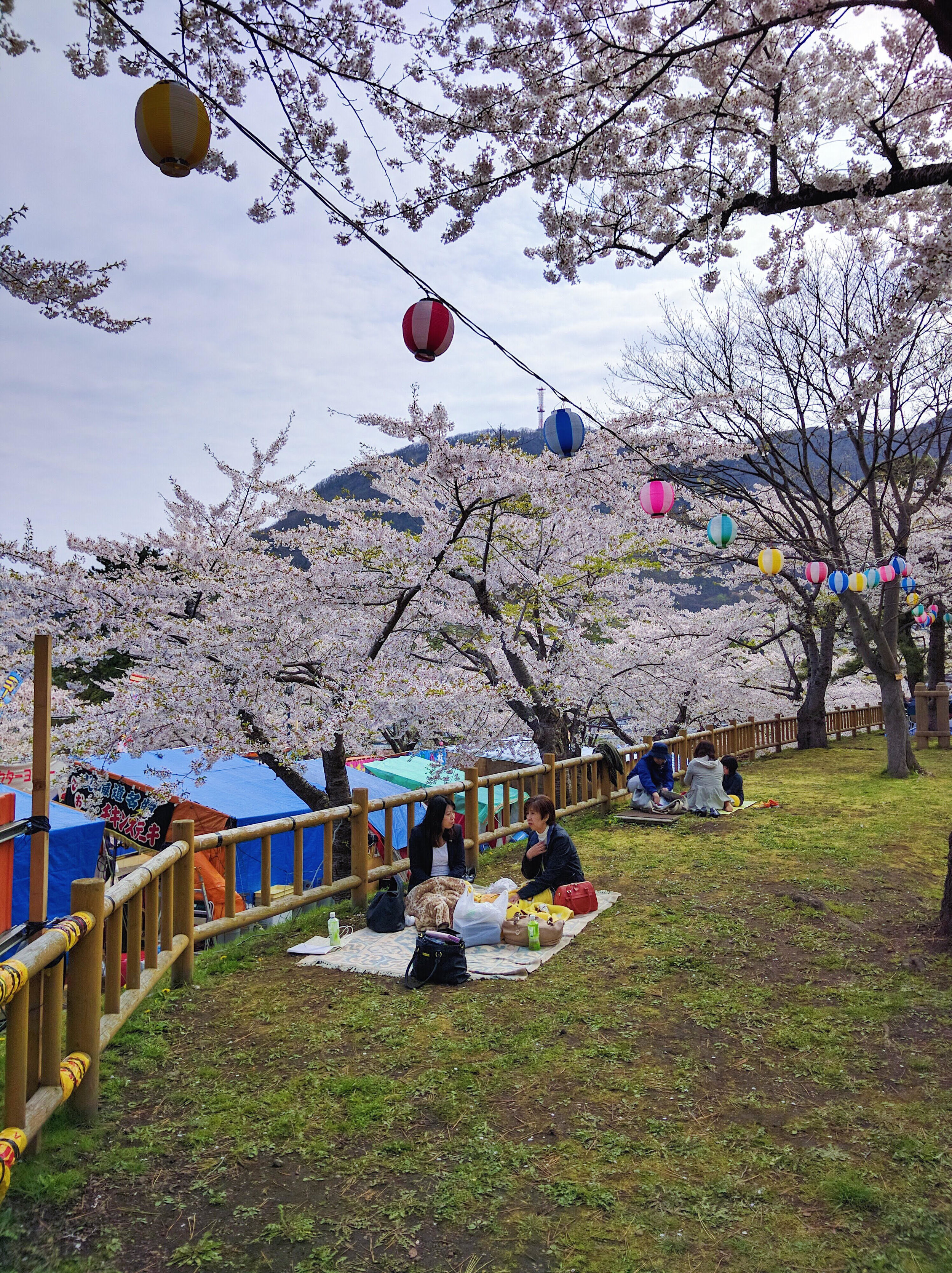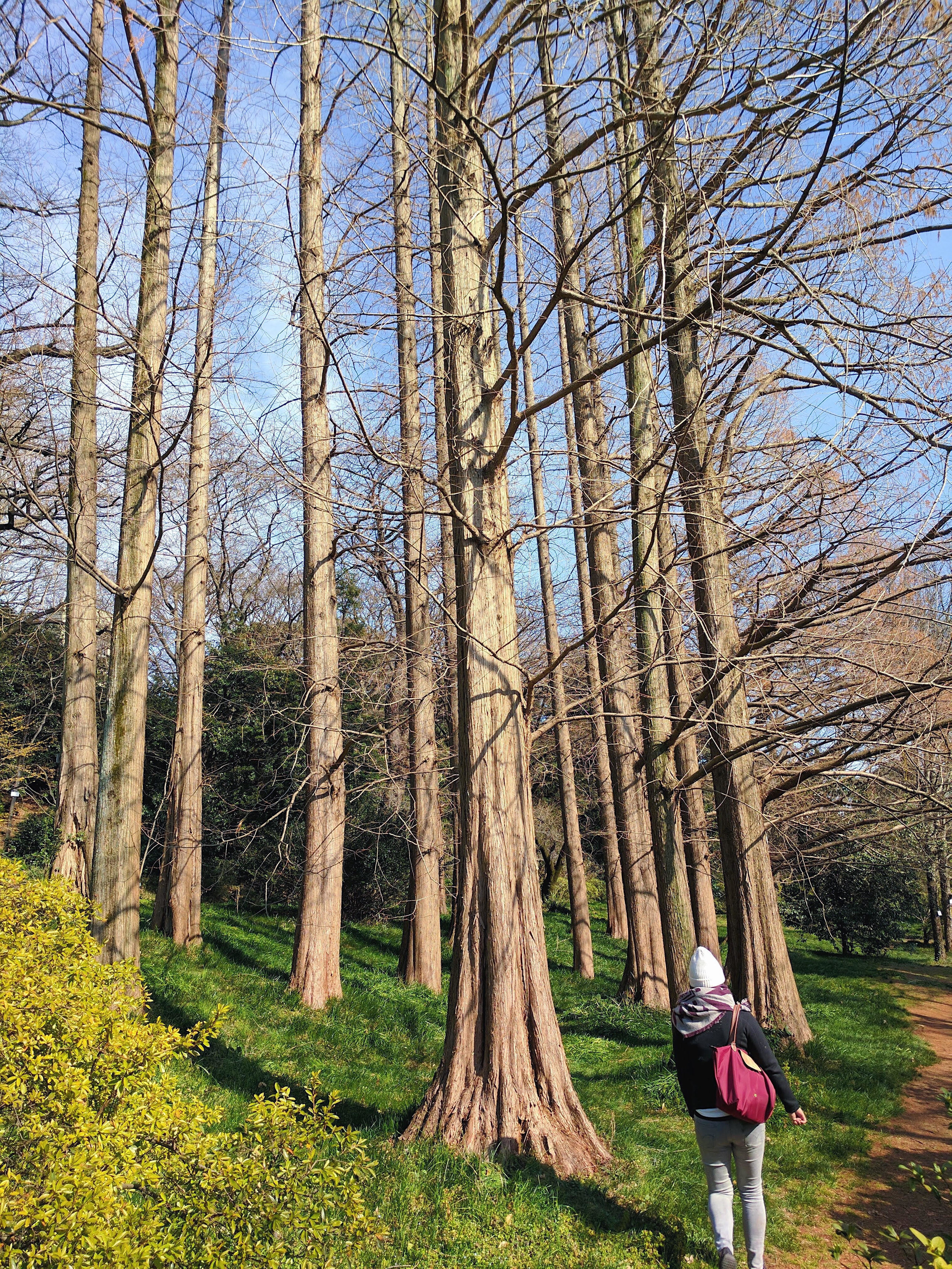I love festivals (matsuri) in Japan. These events feel so special because the entire local community comes out to attend. Japanese culture tends to be very private and reserved, so festivals are one of the few times that you can see entire families and groups of friends enjoying themselves in public. There is something uniquely heartwarming about the Japanese festival state of mind—everyone is so completely immersed in the moment, joyously connecting to each other and celebrating local traditions together.
It’s also a great excuse for a romantic moment—television and anime show-writers take advantage of festivals to have their characters dress up in beautiful yukatas and flirt under fireworks, or finally confess their love beneath blooming cherry blossoms. I actually first learned about the lovely atmosphere of matsuri from watching said Japanese shows and movies.
Shows about high school students always will have scene set during the town’s local matsuri.
Common Japanese past-time during cherry blossom season is picnicking under the blooming trees and enjoying the scenery, an activitiy called hanami in Japanese.
But even though I knew about the festivals themselves, I didn’t do much research on going to a real life festival when I first planned to visit Japan. I followed the typical pattern of most travelers and arranged my whole itinerary around famous destinations like shrines, castles, and museums. So my first experience of a festival was purely accidental—we just happened to walk into a park on a random weekend to find it filled with food stalls and music. This surprise occurrence ended up being one of our favorite parts of the trip.
Japanese festivals vary pretty dramatically in their size and scope, from city-wide spectacles to local neighborhood block parties. Sometimes they have religious origins, centered around shrines and temples, and others are secular. There are no fixed dates since customs are different from area to area, although many do cluster around the changing of the seasons.
Japanese festival food stalls all have the similar look: a canopy overhang with bright colors stamped with the name of the food they’re selling.
One thing that remains the same across festivals is delicious food. Classic carnival-style fare like fried chicken (karaage), stir-fried noodles (yakisoba), fried octopus balls (takoyaki), and grilled skewers are present wherever you find a festival. However, local mom-and-pop shops will also be set up with regional delicacies. Often that famous store with long lines you saw earlier will also be present, proudly taking part in the local community event. Beer and alcohol are also readily available—I have watched mothers chase down their wandering toddlers while deftly balancing a freshly-poured cup of beer in one hand.
Many popular tourist destinations, such as Fushimi Inari or Kiyomizudera Temple in Kyoto, will have permanent food stalls lining the main boulevard. These also sell the same kind of typical festival food, alongside boatloads of souvenirs and trinkets. However, I would argue that these walking streets don’t even come close to the real festival experience.
For one, these areas are packed with tourists. The atmosphere is not the same at all—you won’t see local kids running through the streets with bubble wands, or screaming in delight when they win a carnival game. There are no old men drinking their daytime sake or elegant older Japanese women in kimonos. The food stalls at these tourist hotspots are pristine and professionally managed, making tidy profits from the constant influx of visitors, compared to a festival’s often haphazard setup and casual service. And not only do the stalls look different, the food is worse. The priority is quick delivery into the mouths of hungry tourists, meaning a large amount of food is left to cool before being hurriedly reheated. Meanwhile, a local festival may have longer lines, but that is because each piece of fried chicken (karaage) has been made to order. High-quality food is important to the local Japanese festival attendee.
I could keep writing on and on about the magic of these festivals, but the true depth of delightfulness can only be experienced firsthand. Luckily, festivals are shockingly numerous. There will be at least one festival for every season in a major city or in a nearby town easily reachable by train. And some towns have multiple festivals every year, each one ranging anywhere from 2 days to several weeks in duration. The level of commitment and dedication that Japan collectively has to festival culture is truly wondrous.
Most travel websites only list the “top” or “best” festivals in Japan but ignore the smaller regional festivals that can be just as eye-opening and fun.
My recommendation for first-time tourists is to save a day in your itinerary to attend a matsuri. Once you have chosen initial ideas for what to do in Japan, spend some time researching festivals in the areas you plan to stay. If you’re lucky, the major cities you are visiting will be hosting a festival. Otherwise, it is absolutely worth it to take the train an hour or two away to go to a small-town festival. Quick google searches for “festival + [LOCATION]” will likely turn up major events, but also check festival calendars and city tourism websites too. I’ve noticed that top travel guides will often list only the most famous festivals, neglecting to mention the hundred of other smaller-but-still-delightful ones that happen throughout the year.
If you’re like us and have been to the more trafficked destinations, local festivals are actually a great way to go on off-the-beaten-path trips. I look up local festivals and ceremonies as suggestions for new areas to visit, such as the first Japanese sword-forging ceremony of the year in Gifu or the horse-jumping festival in Mie. We not only get to attend incredible festivals, but also get to go to cities and towns we wouldn’t normally think of visiting. And the smaller the festival, the less the place is exposed to tourism. (Dru and I often use the “we haven’t seen a white person all day” as a success metric.) I have never been disappointed in this way of exploring Japan and have been able to experience numerous niche aspects of Japanese culture and history.
To wrap things up, I’ve listed below some of our favorite festivals we’ve attended over the last few years. Remember to treat this list as a source of inspiration. Do your own research and look up festivals or other events that I have never even heard of!
Hakodate Park Cherry Blossom Festival
This was the first matsuri that I attended. We went to Hakodate in May 2016, hoping to see some cherry blossoms in peak bloom. As we were walking around the town, we saw a park with a lot of cherry blossom trees. We went in to find a good viewing spot and found a festival underway!
Kishiwada Danjiri Matsuri
I was starting to learn the value of searching for festivals in the areas I was planning to visit. On my first trip to Osaka, I realized we would be there the same weekend that the Kishiwada Danjiri Matsuri was happening. So that weekend we took a train 45 minutes from Osaka Station to the town of Kishiwada. That morning, it was raining and we were worried that the festival would be less lively. But to our relief, the festival was in full swing when we arrived, not caring about the rain at all. It was so fun to see the riot of people pulling huge floats (at very alarming speeds) through the streets!
KICHIJOJI AUTUMN FESTIVAL
Autumn and the changing of the leaves is a jam-packed festival season. It seemed like there was a festival almost every weekend in the Tokyo area during September and October 2018. Kichijoji Autumn Festival was a particularly fun one. Even though we didn’t see the full shrine-pulling (mikoshi) parade on the first day, the second day had plenty of food stalls and noisy celebrations to make it a fun afternoon.
Tamagawa Fireworks Matsuri
This congested exit from the paid-area for viewing Tamagawa fireworks is literally my nightmare.
During the summer season, almost every weekend a different area of Tokyo will put on a fireworks festival (hanabi). Japanese people really love their fireworks. Tamagawa Fireworks Festival happens along the banks of the Tamagawa river, and is one of the last and biggest fireworks festivals of the year. I didn’t do any in-depth research beforehand and brought along my family who were visiting that week. We ended up joining thousands of people in watching what was the best fireworks show I have seen in my entire life. And I grew up next to Disney World, so that’s saying something.
The show lasted almost a full hour and had two separate places along the bank of the river launching fireworks simultaneously. (Pro-tip: to skip a massive crowd as you are leaving, don’t go to the paid viewing area. Across the bridge there is free seating to watch the same fireworks and they were also throwing a mini-festival with food stalls under the bridge.)
Sapporo snow festival (yuki matsuri)
Sapporo Snow Festival is the perfect event to wrap up our list of visited festivals. The snow festival is one of the most famous Japanese festivals and has been on our bucket list for a long time. It started when six high-schoolers built some ice sculptures in 1950 to a seven-day extravaganza, with more than 150 snow sculptures and dozens of ice sculptures. There’s a huge area for kids and adults (like me) to slide down a huge snow slide. They even constructed a massive ski jump in the middle of the city, with skiers and snowboarders doing tricks and massive wipe-outs for a huge crowd every night. This is a truly amazing, unique event that is worth planning a Hokkaido trip to go see. Especially if you love snow, and I mean lots of snow.




























